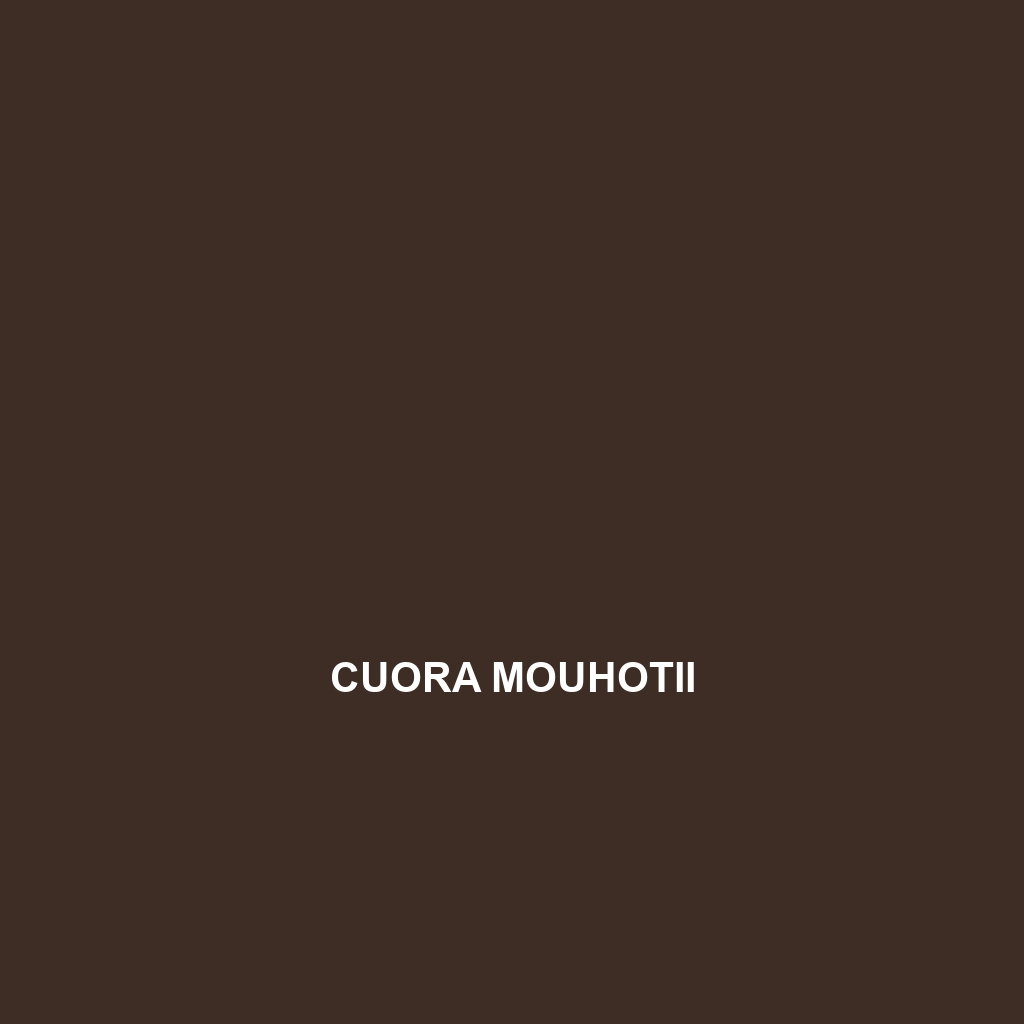Cuora mccordi
Common Name: Cuora mccordi
Scientific Name: Cuora mccordi
Habitat
Cuora mccordi, commonly known as McCord’s Box Turtle, is primarily found in the humid forests of Southeast Asia. This species inhabits regions such as Vietnam, Laos, and northeastern Cambodia, typically residing in lowland areas near water bodies, including rivers and swamps. The warm, moist environment is crucial for its survival and breeding.
Physical Characteristics
Cuora mccordi is a medium-sized turtle, measuring around 10 to 12 inches in shell length. It is identifiable by its high-domed carapace, which is usually dark brown to black, adorned with yellow radiating stripes. The plastron is usually yellow with dark blotches, offering a striking contrast. Notably, this species possesses a unique hinged shell, enabling it to retract its head and limbs for protection.
Behavior
This turtle is predominantly terrestrial but is often observed basking in the sun or foraging for food. Cuora mccordi is known for being rather shy and elusive, making it a challenge for researchers to observe its natural behaviors in the wild. It is mostly active during the day and tends to hide in leaf litter or under vegetation to avoid predators.
Diet
Cuora mccordi is an omnivorous species, feeding on a varied diet that includes fruits, vegetables, insects, and small invertebrates. It plays a role in seed dispersal, as it consumes various fruits contributing to the ecosystem’s health. The turtle’s feeding habits are crucial for maintaining the ecological balance in its habitat.
Reproduction
The breeding season for Cuora mccordi usually occurs from late spring to early summer. Females lay clutches of 2 to 5 eggs in sandy or soft soil areas. The incubation period lasts approximately 60 to 90 days, after which hatchlings emerge, fully formed and ready to fend for themselves. Maternal care is minimal, emphasizing the species’ independence from a young age.
Conservation Status
Cuora mccordi is currently classified as Critically Endangered on the IUCN Red List due to habitat loss, poaching for the pet trade, and environmental degradation. Conservation efforts are necessary to protect this unique species and its natural habitat.
Interesting Facts
Despite their conservation challenges, Cuora mccordi turtles are known for their remarkable longevity, often living several decades, making them sought after for both research and the pet trade. Their unique shells and vibrant coloration are particularly attractive to collectors, further complicating their conservation status.
Role in Ecosystem
Cuora mccordi plays a vital role in its ecosystem by contributing to the control of insect populations and seed dispersal through its feeding habits. As part of the food web, it serves as prey for larger predators, thus maintaining ecological balance. The decline in their population could disrupt food chains and affect the overall health of their habitats.
